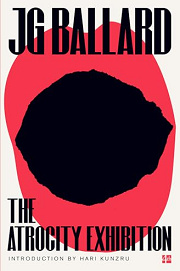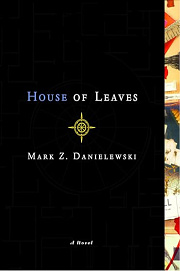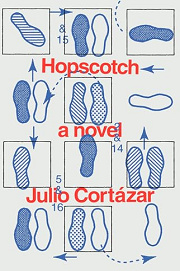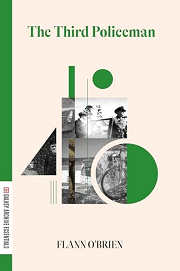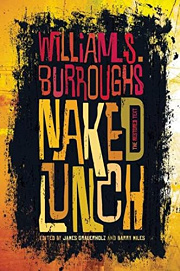Share your thoughts in a quick Shelf Talk!
The Atrocity Exhibition by J.G. Ballard
"Crash sites, celebrity, and the machinery of modern desire are spliced into a startling collage of the late-20th-century psyche. The Atrocity Exhibition rewires narrative itself, delivering an audacious, unsettling exploration of media, memory, and the erotic pull of catastrophe."
Have you read this book? Share what you liked (or didn’t), and we’ll use your answers to recommend your next favorite read!
Love The Atrocity Exhibition but not sure what to read next?
These picks are popular with readers who enjoyed this book. Complete a quick Shelf Talk to get recommendations made just for you! Warning: possible spoilers for The Atrocity Exhibition below.
In The Atrocity Exhibition, did you enjoy ...
... typographic collage, faux-academic marginalia, and documentary fragments?
House of Leaves by Mark Z. Danielewski
If you loved how The Atrocity Exhibition spliced medical notes, headlines, and clinical captions around Traven/Talbert’s car-crash tableaux and Kennedy re-enactments, you’ll sink right into House of Leaves. Its nested “reports,” film transcripts, and obsessive footnotes echo Ballard’s dossier-like texture, turning architecture and media into a psychosexual maze the way Ballard turns freeway interchanges and celebrity iconography into pathology.
... fragmentary, punchy vignettes that accumulate into a portrait of a mind under media saturation?
Speedboat by Renata Adler
The way Ballard’s brief sections build an eerie mosaic—crash sites, pop icons, and clinical aphorisms—finds a realist, razor-edged mirror in Speedboat. Adler’s shards of scenes, headlines, and tart observations stack into a psychological x‑ray of modern life, much like Ballard’s clipped captions anatomize desire amid billboards and disaster images.
... nonlinear, reorderable chapters that let you navigate the narrative like an experiment?
Hopscotch by Julio Cortázar
If the scrambled sequencing of The Atrocity Exhibition—where the Traven/Tallis persona mutates as scenes recur—was part of the thrill, Hopscotch invites you to choose your reading path. Its “expendable” chapters create echo chambers of motif and obsession, much like Ballard’s recursive crash/celebrity matrices, rewarding you for pattern-hunting across discontinuities.
... deadpan surrealism where logic collapses into dreamlike black comedy?
The Third Policeman by Flann O'Brien
Ballard’s cool clinical tone applied to impossible scenarios—eroticized wrecks, media idols treated like surgical specimens—has a kinship with O’Brien’s straight-faced absurdities: atomic theory of bicycle-thieves, infinite roads, and a police station outside reason. Like Ballard’s Traven stalking psychosexual landscapes, the nameless narrator wanders a reality that obeys nightmare rules with chilling calm.
... transgressive, darkly comic cut-up episodes and medicalized erotic grotesque?
Naked Lunch by William S. Burroughs
If you were drawn to the mordant wit in The Atrocity Exhibition—the cool, clinical captions that turn catastrophe and fetish into sardonic diagnosis—Naked Lunch pushes that black comedy into delirium. Its scenes of doctors, addicts, and bureaucrats refract vice through case-report language, much like Ballard’s morbid humor around celebrity, surgery, and staged collisions.
Unlock your personalized book recommendations! Just take a quick Shelf Talk for The Atrocity Exhibition by J.G. Ballard. It’s only a few questions and takes less than a minute.
